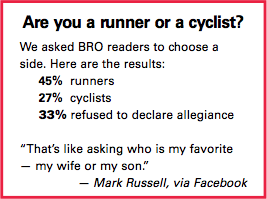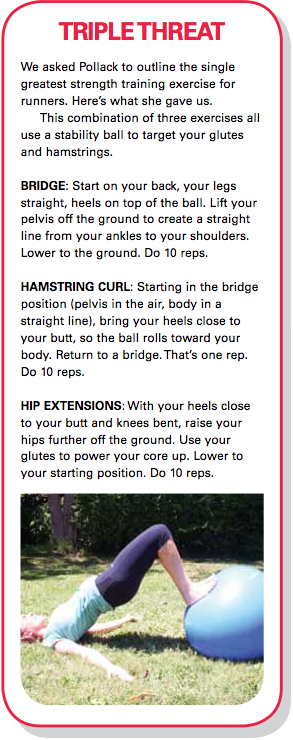![]()
 Does running really burn more calories than cycling? Does cycling really result in fewer injuries than running? Is one exercise better than the other in terms of overall health?
Does running really burn more calories than cycling? Does cycling really result in fewer injuries than running? Is one exercise better than the other in terms of overall health?
Both are almost equivocally good for cardiovascular fitness and burning calories, says Dr. David Swain, director of the Wellness Institute and Research Center at the Old Dominion University and author of Exercise Prescription.
According to Swain, an average athlete can burn five percent more calories running than biking, and because running is a weight-bearing activity, it can stimulate bone growth and strength as well. Because cycling is a low-impact sport, there is little bone training.
The additional impact of running can lead to more orthopedic injuries. But then, mechanical injuries like crashing, are more common for cycling.
But the biggest difference lies not in the activity, but in the intensity and duration of the exercise.
Running Strong
You’re going to run hills. It’s a fact of life for runners. You can either accept this, or be relegated to slogging it out on the hamster wheel at the gym day after day, with the incline set on zero and the TV set on Judge Judy. Are you ready to embrace the hill in front of you? Good. Now, if you want to master those hills instead of suffer through them, be prepared to embrace something else runners hate: strength training.
“Runners typically only seek out strength training when they plateau or when they have a collection of random injuries that won’t go away,” says Samantha Pollack, a nutritionist and trainer who teaches strength training clinics for runners in Asheville. “A lot of runners don’t want to get big. There’s a misconception among runners that strength training will make them slower and heavier. The reality is, unless you’re specifically training to put on size and muscle, you’re not going to gain weight. And you won’t get slower. If anything, you’ll get faster.”
Pollack recommends adding two strength-training sessions a week that focus primarily on your core and glutes. You’ll see an increase in speed and power when you’re tackling hills.
Web Exclusive: Watch Pollack’s Triple Threat video to build strength
Ask the Expert
Q: Can humans really become addicted to carbs?
A: Certain “comfort” or fatty, sugary, calorie-dense foods can trigger reward systems in the brain more than other foods. Higher sugar intake also tends to produce more addictive-like behaviors that can lead to craving fatty, sugary foods.
In studies of mice, dopamine, the neurotransmitter in the brain associated with reward and pleasure, decreases over time when a high-comfort food diet is eaten. So even more sugars are craved in order to trigger higher dopamine levels.
The bottom line: Eat a diet high in nutrient-dense foods and combine that with exercise which also increases dopamine activity and stimulates the pleasure circuits in the brain.
—Namrita Odea, registered dietitian and endurance mountain biker specializing in nutrition for sports performance









